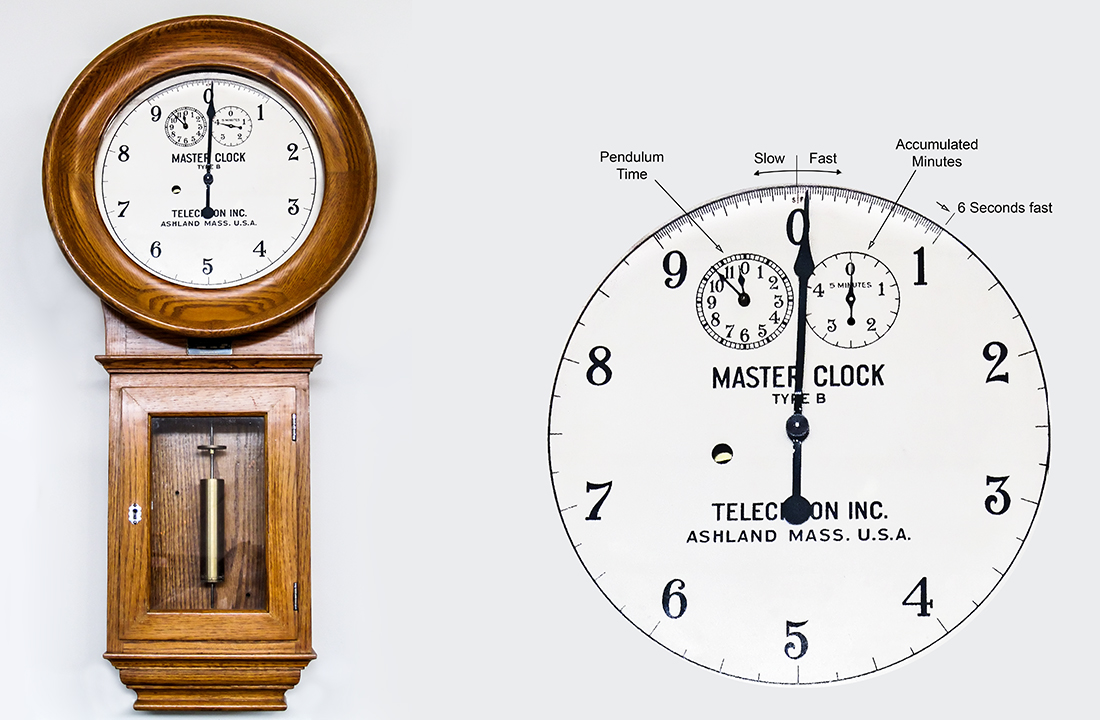
Master Clock
Thirty to forty years ago, Edmonton Power used this device to monitor the system
frequency and time. The power station's goal was to maintain the average frequency at
60 Hz (cycles per second) to ensure that all electrical clock time was accurate.
Since power demand has to be precisely matched to the generator output to maintain
correct frequency, large load demand changes such as loss of a generator or transmission
line may result in momentary variations from 60 Hz due to lagging response timing of
governors and boiler steam generation.
Frequency variations accumulate over longer time periods and require rebalancing
to ensure that the average frequency is brought back to 60 Hz, so that all electric clocks indicate the correct time
The Master Clock contains two clocks; an accurate mechanical pendulum clock that
provides real time, and a synchronous motor clock that relies on the system frequency.
The Motor and Pendulum Clocks act on the same index hand (the large needle)
through gearing. The motor tends to drive the hand in one direction, and the pendulum in
the opposite direction.
If the rate of the Motor and Pendulum clocks are the same, the hand stays at rest.
When the dials are at zero, the frequency and time are correct - no action required.
If the motor is fast the hand moves in a clockwise direction indicating that the average
frequency greater than 60 Hz and an operator may need to lower the generator speed to
bring the big hand to zero (correct time).
If the average frequency is less then 60 Hz, the electric motor runs slower than the
pendulum clock causing the large needle to move counter-clockwise. To correct the electrical
time (average frequency) the operator will run the frequency slightly higher than 60
Hz, until the clocks are in sync and the dials read zero.
